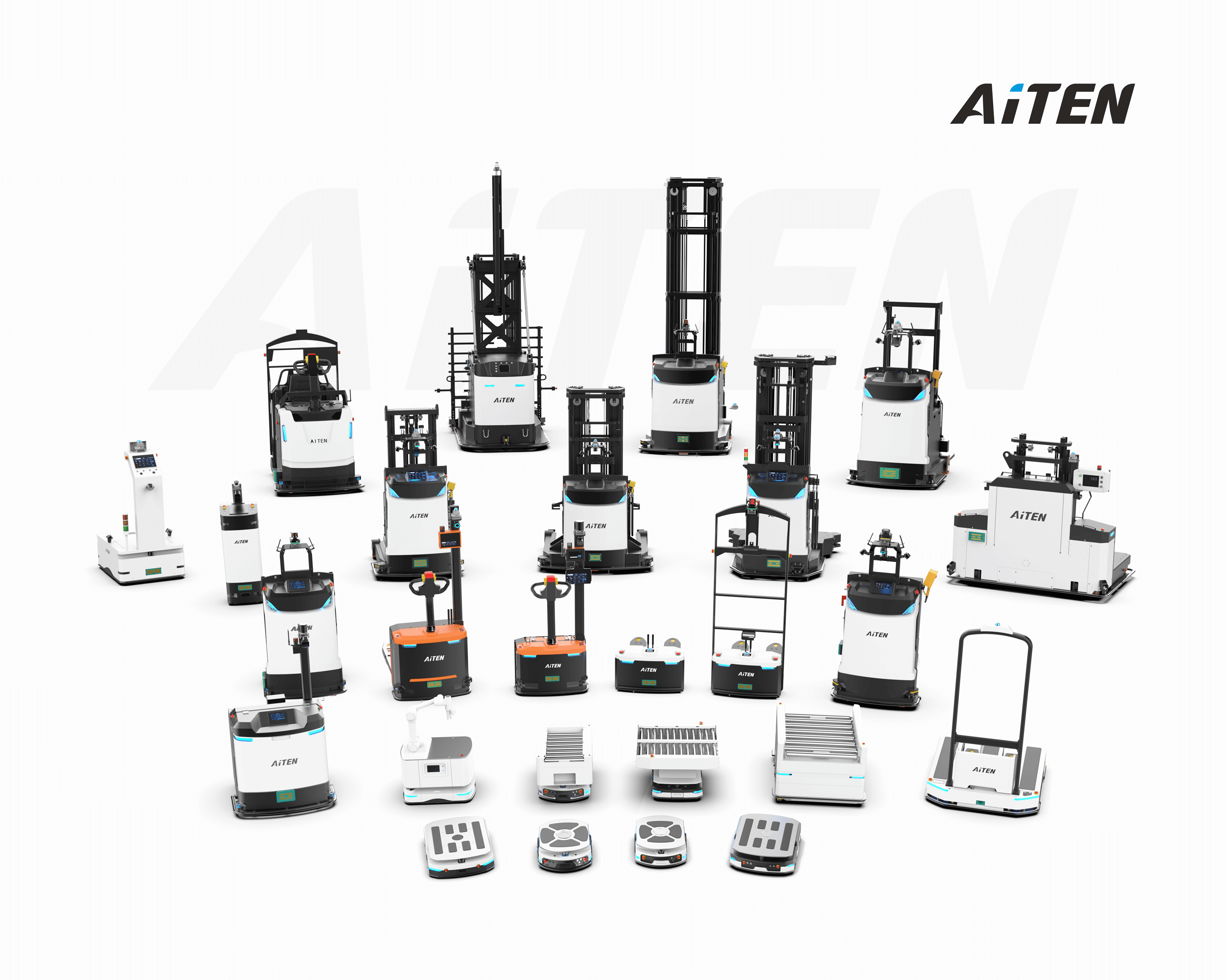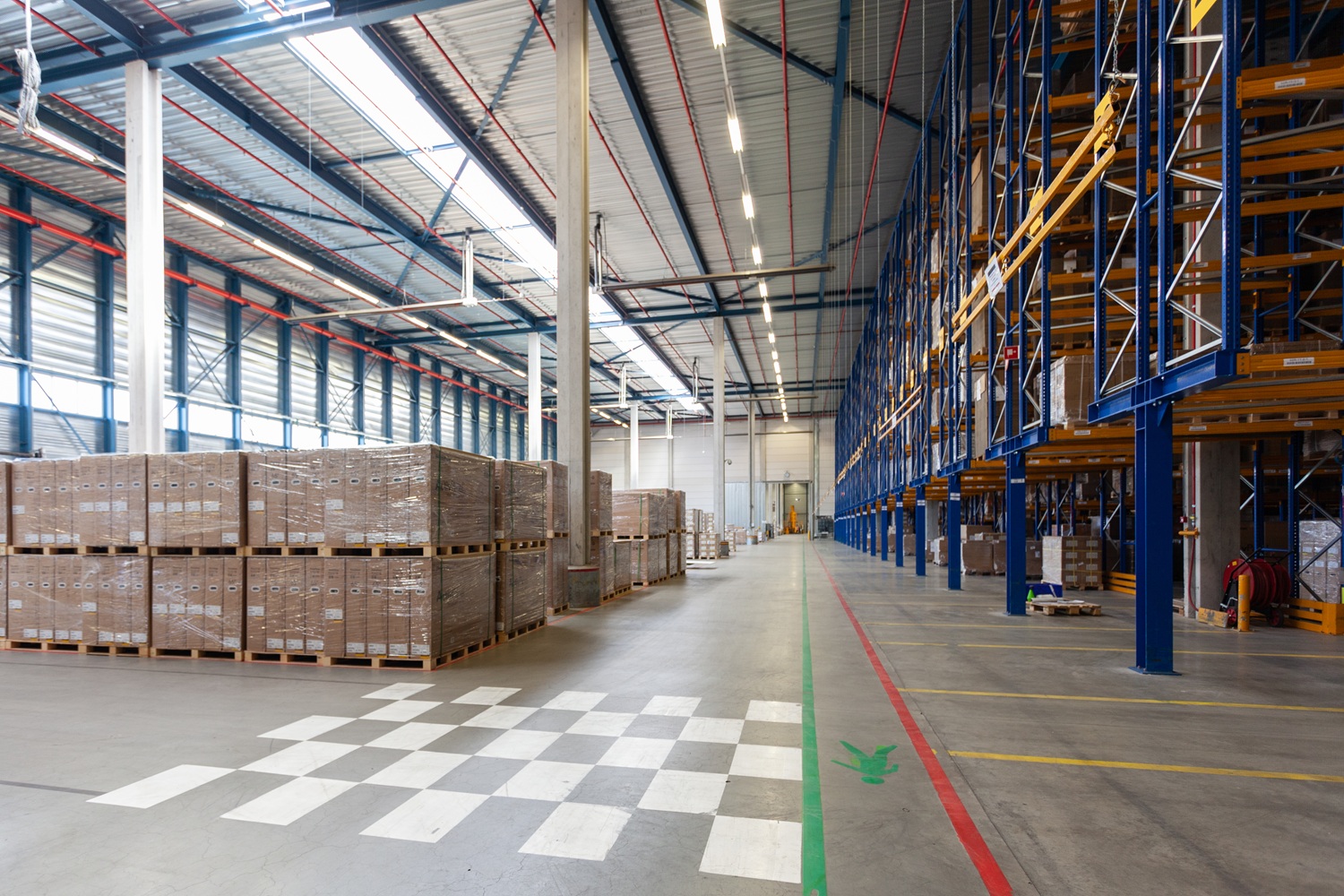Robots para carretillas elevadoras en la fabricación inteligente: Marcas clave y criterios de selección

Con el rápido desarrollo de la fabricación inteligente y la logística de almacenes, los robots de carretillas elevadoras se han convertido en una pieza clave de la automatización industrial. Estos dispositivos combinan navegación automática(AGV/AMR), programación inteligente y capacidad de manipulación eficiente, sustituyendo gradualmente al trabajo manual tradicional y a las carretillas elevadoras eléctricas ordinarias, y se utilizan ampliamente en diversas industrias.
Con tantas marcas disponibles en el mercado, ¿cómo elegir el socio más adecuado? A continuación presentamos algunas marcas conocidas de robots de carretillas elevadoras y proporcionamos a los usuarios del sector referencias para la toma de decisiones.
Análisis de marcas de robots de carretillas elevadoras
1. Seegrid
Sede central: Estados Unidos
Principales tipos de productos: Transpaletas automáticas, carretillas elevadoras AMR
Como pionero en navegación visual, los robots móviles autónomos de Seegrid pueden desplegarse rápidamente sin necesidad de infraestructura adicional. Su serie GMP AMR es especialmente popular en grandes fábricas y logística de terceros.
2. Motores OTTO
Sede central: Canadá
Principales tipos de productos: Robots autónomos para carretillas elevadoras, AMR de transporte
Centradas en soluciones AMR de calidad industrial, las carretillas elevadoras AMR de OTTO son conocidas por su "seguridad, estabilidad y gran capacidad de carga" y son adecuadas para escenarios de fabricación pesada.
3. Linde Robotics
Sede central: Alemania
Principales tipos de productos: Carretillas elevadoras inteligentes, robots VNA
Como gigante tradicional de las carretillas elevadoras, Linde ha integrado la tecnología de conducción autónoma en sus modelos clásicos, proporcionando una ruta de actualización de transición suave.
4. Balyo
Sede central: Francia
Principales tipos de productos: Carretillas elevadoras automáticas, apiladoras
Utiliza la tecnología de navegación natural (SLAM), con un excelente rendimiento en locales sin códigos QR ni bandas magnéticas.
5. Geek
Sede central: China
Principales tipos de productos: Carretillas elevadoras autónomas, vehículos de transporte AMR
Como representante de las exportaciones chinas de robots móviles autónomos, su estrategia de doble tracción "RoboShuttle+Cargadora de horquilla" cubre eficazmente una gran variedad de escenarios, desde artículos pequeños y medianos hasta el transporte de palés enteros.
6. Agilox
Sede central: Austria
Tipo de producto principal: Carretilla elevadora omnidireccional AMR
Conocida por su exclusiva tecnología de accionamiento omnidireccional y su sistema de programación distribuida, es adecuada para escenarios de trabajo altamente flexibles y con múltiples SKU.
7. AiTEN Robotics
Sede central: China
Principales tipos de productos: Carretillas elevadoras autónomas, carretillas elevadoras no tripuladas
Una marca china representativa que abarca múltiples líneas de productos, desde AMR hasta carretillas elevadoras totalmente automatizadas, admite modificaciones personalizadas y se utiliza ampliamente en sectores como el de piezas de automóviles, alimentación, medicina y comercio electrónico.
El valor fundamental de los robots para carretillas elevadoras
- Reducción de costes y mejora de la eficiencia: Funcionamiento ininterrumpido 7×24 horas, lo que mejora significativamente la eficiencia de la manipulación y reduce los costes de mano de obra y los errores.
- Seguridad y fiabilidad: Construido con múltiples sensores, evitación automática de obstáculos, reduciendo significativamente el riesgo de accidentes durante las operaciones manuales.
- Basado en datos: La recopilación de datos de manipulación de materiales en tiempo real proporciona información precisa para la optimización de procesos y la toma de decisiones.
- Actualizaciones flexibles: Ajuste rápidamente las rutas y tareas para adaptarse a los cambios en los modos de producción o almacenamiento, mejorando la agilidad corporativa.
- Optimización del espacio: Mejora significativamente la utilización del espacio del almacén.
¿Cuáles son las ventajas de utilizar una carretilla elevadora autónoma?
Consideraciones clave al seleccionar un robot para carretillas elevadoras
1. Requisitos básicos: Definir claramente el tipo, el peso, la frecuencia, los requisitos de precisión y el entorno del emplazamiento (anchura del pasillo, condiciones del suelo y nivel de tráfico peatonal y de vehículos) de los materiales que se van a transportar.
2. Métodos de navegación: SLAM láser, navegación visual y navegación por código QR, adaptables a distintos entornos in situ. SLAM (láser/visual) ofrece gran flexibilidad y se adapta bien a entornos dinámicos; la navegación por código QR es rentable con trayectorias fijas. Selección en función de las necesidades específicas.
3. Capacidad de carga y duración de la batería: Ajuste los requisitos a los materiales más pesados y tenga en cuenta la duración de la batería; seleccione adecuadamente en función del tipo de carga.
4. Capacidad del sistema de despacho: La eficiencia del sistema de despacho influye en el retorno de la inversión global del sistema; el sistema de despacho de robots de desarrollo propio de AiTEN Robotics admite el funcionamiento de más de cien robots de carretillas elevadoras.
5. Adaptabilidad al escenario: ¿Admite pasillos estrechos, transporte de piso a piso, almacenamiento en frío y otros escenarios complejos?
6. 6. Compatibilidad del sistema: La capacidad del sistema de programación de robots para integrarse a la perfección con WMS, ERP, MES y otros sistemas de gestión existentes es fundamental.
7. Escalabilidad y flexibilidad: ¿Puede ampliarse fácilmente el número de robots tras el crecimiento de la empresa? ¿Puede adaptarse a futuros cambios en los procesos? Los robots AiTEN pueden lograr la compatibilidad con otros sistemas de robots de manipulación de materiales.
8. Servicios posventa y de implantación: Una respuesta rápida y un apoyo localizado son esenciales para el éxito del proyecto.
¿Cómo elegir entre carretillas elevadoras automáticas y AGV para su almacén?

Predicciones de tendencias futuras
- Las funciones basadas en IA, como la planificación de rutas, la programación de tareas y la gestión de anomalías, serán cada vez más inteligentes.
- Colaboración hombre-máquina en evolución: La seguridad mejorará y la colaboración eficaz entre personas y máquinas en el mismo espacio se convertirá en la norma.
- Salto en las capacidades de percepción: La visión 3D y la tecnología de fusión multisensor permitirán a los robots comprender su entorno de forma más inteligente.
- Platformización y desarrollo del ecosistema: Una plataforma abierta integrará más dispositivos para construir un ecosistema logístico inteligente más completo.
Conclusión
Los robots de carretillas elevadoras están remodelando el sector de la logística y la manipulación de materiales a un ritmo sin precedentes. Elegir la marca adecuada no solo tiene que ver con el rendimiento de una sola pieza del equipo, sino que también determina la rentabilidad de la inversión de todo el sistema automatizado.
Antes de tomar una decisión, las empresas deben llevar a cabo una investigación exhaustiva, realizar pruebas in situ y considerar sus propios procesos operativos y planes de desarrollo estratégico para asegurarse de que seleccionan el robot carretilla elevadora más adecuado, mejorando así la eficiencia logística y los niveles de automatización.
Acerca de AiTEN Robotics
Como empresa especializada en soluciones logísticas inteligentes, AiTEN Robotics se ha centrado sistemáticamente en el escenario de la "fábrica inteligente", integrando profundamente la innovación tecnológica con las necesidades de la industria. Ha prestado servicios integrales a más de 200 clientes fabricantes de todo el mundo: Aprovechando una gama completa de carteras de productos de robots de manipulación de materiales para cubrir diversos escenarios de manipulación de materiales, hemos desarrollado un sistema de programación inteligente de nivel industrial para permitir una colaboración eficiente entre múltiples dispositivos. A través de un sistema integral de servicios de ciclo de vida que abarca desde la planificación preventa, la implantación y la implementación hasta la optimización de las operaciones, capacitamos a las empresas para lograr la transformación inteligente de la logística, impulsando continuamente la actualización digital y el desarrollo de alta calidad de la industria manufacturera.
Póngase en contacto con nosotros para estudiar soluciones de automatización para su fábrica.
Preguntas más frecuentes (FAQ)
1. P: ¿Cuáles son las principales diferencias entre las carretillas elevadoras robotizadas y las tradicionales?
R: La mayor diferencia radica en la inteligencia y la automatización. Los robots carretilla no requieren conducción manual. Utilizan sistemas de navegación incorporados (láser SLAM/visual SLAM/códigos QR, etc.) para lograr una planificación autónoma de la trayectoria y evitar obstáculos, y están gestionados por un sistema de despacho central. En cambio, las carretillas elevadoras tradicionales se manejan totalmente a mano.
2. P: ¿Requiere la implantación de robots carretilla grandes reformas en el almacén?
R: Depende de la tecnología de navegación seleccionada. La navegación SLAM (navegación natural) suele requerir la menor renovación del entorno existente y es la más adaptable. La navegación por código QR requiere la colocación de códigos en el lugar, lo que es relativamente controlable. La navegación por bandas magnéticas o raíles requiere la instalación de bandas magnéticas o raíles, lo que implica una renovación importante. La tendencia dominante se orienta hacia la navegación SLAM, que requiere una renovación mínima del entorno.
3. P: ¿Qué más pueden hacer los robots carretilla además de transportar mercancías?
R: Los robots modernos para carretillas elevadoras son cada vez más versátiles. Por ejemplo, pueden equiparse con brazos robóticos o módulos superiores para realizar cargas, descargas y apilamientos automáticos; integrarse con sistemas RFID o de visión para permitir la identificación automática de materiales y la unión de información; y conectarse a equipos de líneas de producción para participar en procesos de producción automatizados.









_%E7%94%BB%E6%9D%BF%201.avif)

